At precisely 3:30pm on 15th May 1903, the start of electric tramcar operations on London County Council’s tramway was celebrated in style. Following an elaborate banquet for 2,334 people, a specially decorated tramcar – number 86 – conveyed the Prince and Princess of Wales (the future King George V and Queen Mary), their family and a select group of dignitaries and officials from Westminster to Tooting.
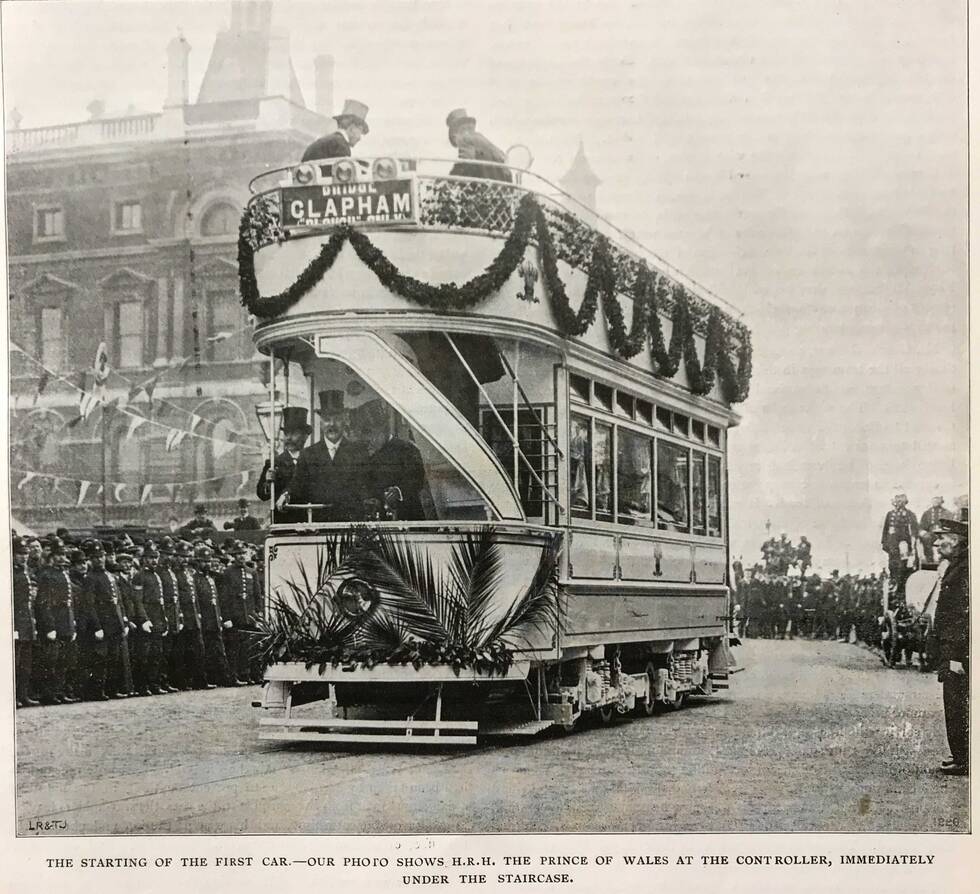
Source: The Light Railway and Tramway Journal, June 5th, 1903.
The gleaming white royal tramcar was decorated with palm leaves and garlands on the outside while the interior wooden seating had been replaced by pale blue and pink armchairs that were complemented by matching blue carpet and blue and white curtains at the windows. The proceedings were accompanied by a programme of music performed by the “A” section of the Council’s own Parks Band. A Complimentary Guard of the London Fire Brigade was stationed at the tramway terminus on Westminster Bridge Road to mark the occasion. In addition, a mounted guard of honour was provided by the Prince of Wales’ own 12th Middlesex (Civil Service) Volunteers (LCC Company).
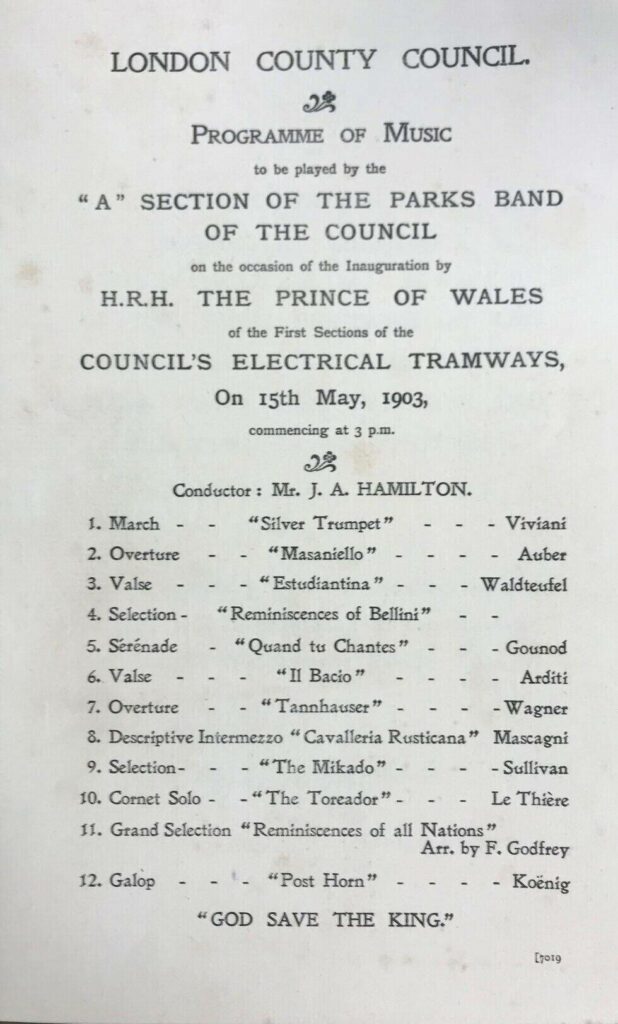
London County Council programme of music, 15th May 1903.
The driver for the inaugural journey was the Tramways Manager, Alfred Baker. The privileged first passengers paid the halfpenny fare by tendering coins that had been specially minted for the occasion. These were passed to the ‘conductor’, Mr John Williams Benn, the Chairman of the L.C.C. Highways Committee, who issued specially printed tickets in blue and gold in exchange for each coin.
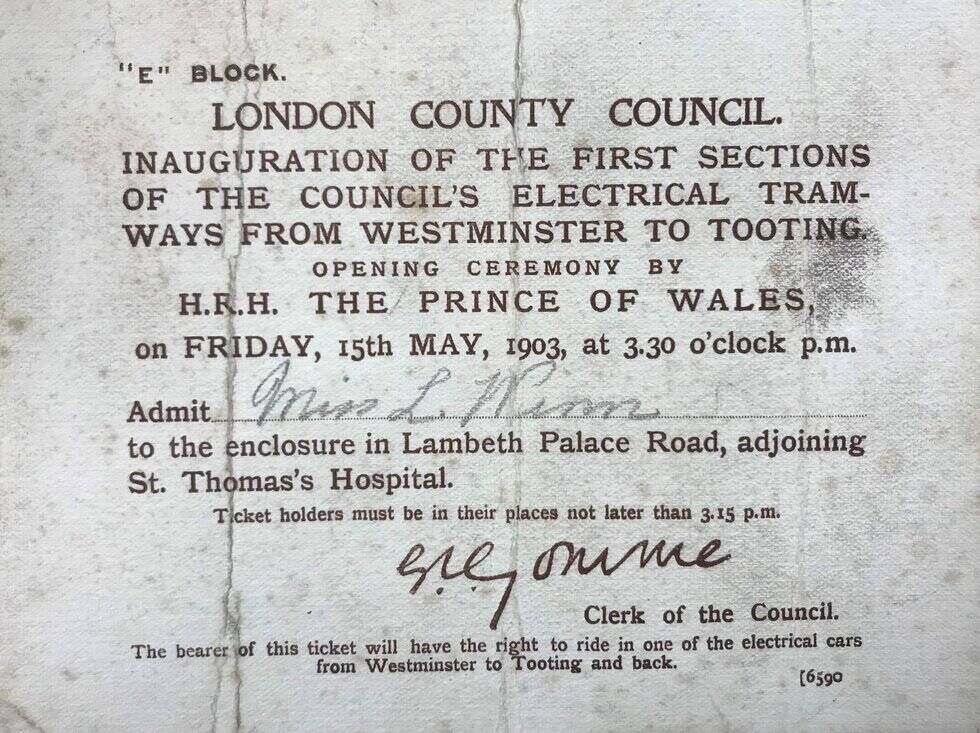
A ticket for the inaugural tram journey, 15th May 1903.
At Tooting, the official party disembarked for a tour of local workmen’s housing – The Totterdown Fields Garden Estate – that was being built by the LCC as part of its progressive policy of housing renewal. The aim was to provide good quality housing in the form of spacious cottages with gardens that were available for rent at reasonable rates. This policy was linked to improvements in transportation that would enable workers to move away from overcrowded city-centre slums to live in leafier suburbs and travel into central London to work, making use of the council’s cheap tramfares policy.
According to the Times newspaper, hundreds of thousands of people participated in the event. Shops were closed and schoolchildren were given a day off so that they could also take part. The princes were also said to have been very excited by their journey by tram (The Times, 16th May 1903).
The event was also reported in detail in the Light Railway and Tramway Journal dated June 5th, 1903. Shortly before the event took place, the Tramway and Railway World dated May 14th, 1903 featured a coloured illustration (unusual for the period) of one of the electric tramcars that were used to operate the first service. Because the power supply on the initial section of track was delivered by conduit as opposed to overhead wires, there was no need for these early tramcars to have a trolley pole.
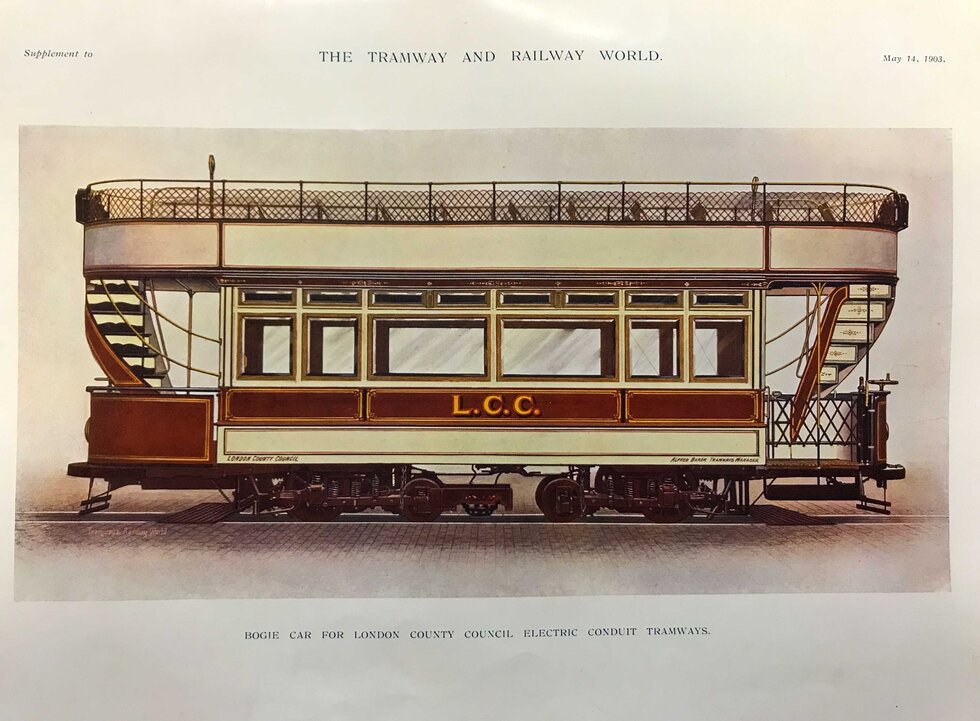
LCC bogie car (source: The Tramway and Railway World, May 14th 1903).
As was often the case on such occasions, special commemorative postcards were produced by commercial printers to serve as souvenirs. These items also enabled onlookers to share the event with others who weren’t able to attend in person. These in turn became collectors’ items in the fashionable Edwardian hobby of postcard collecting. The example pictured below was photographed by Gordon Smith of Allerton Road, Stoke Newington, London, who began selling photographs of London scenes and events in 1903.
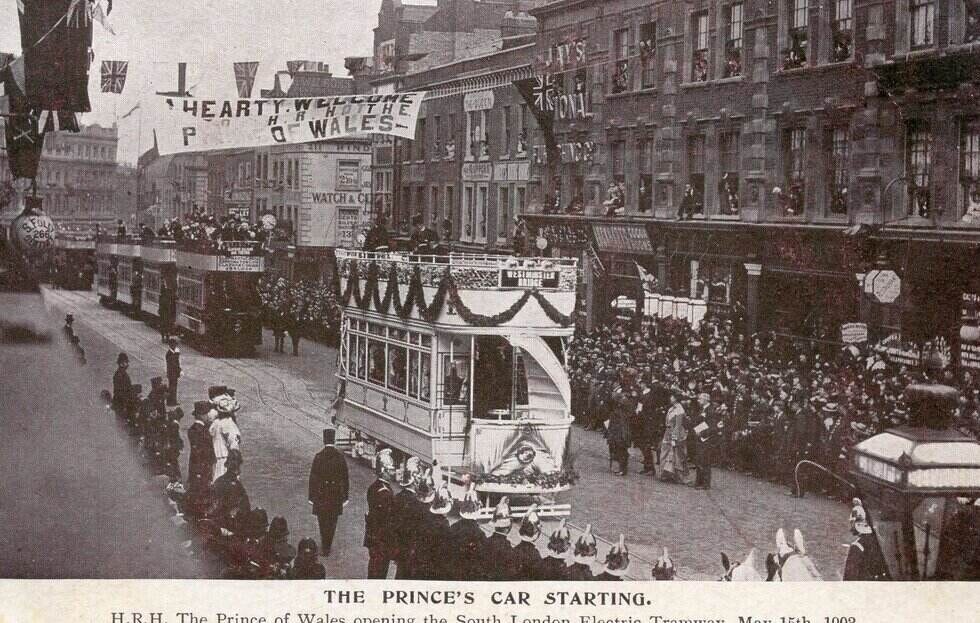
A postcard produced to show the start of LCC electric tramcar operations, 15th May 1903.
The LCC also produced its own inauguration document to commemorate the event, which took the form of a detailed tramway history that included the development of London’s tramways and contained a number of high-quality photographs.
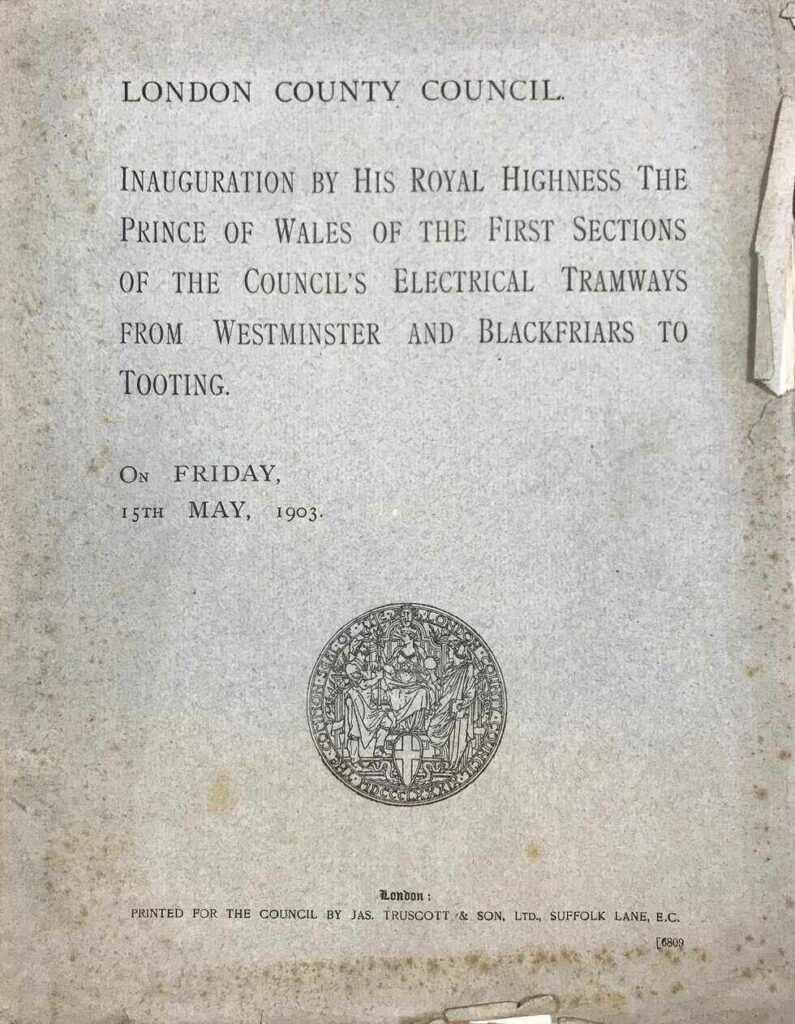
The cover of the document produced by London County Council to commemorate the event.
Among the more ephemeral items that were also produced to mark the occasion were paper napkins for the use of those attending the celebratory banquet. One of these has survived and features in a new exhibition – “The Art of Trams” – that has recently opened at Crich Tramway Village.
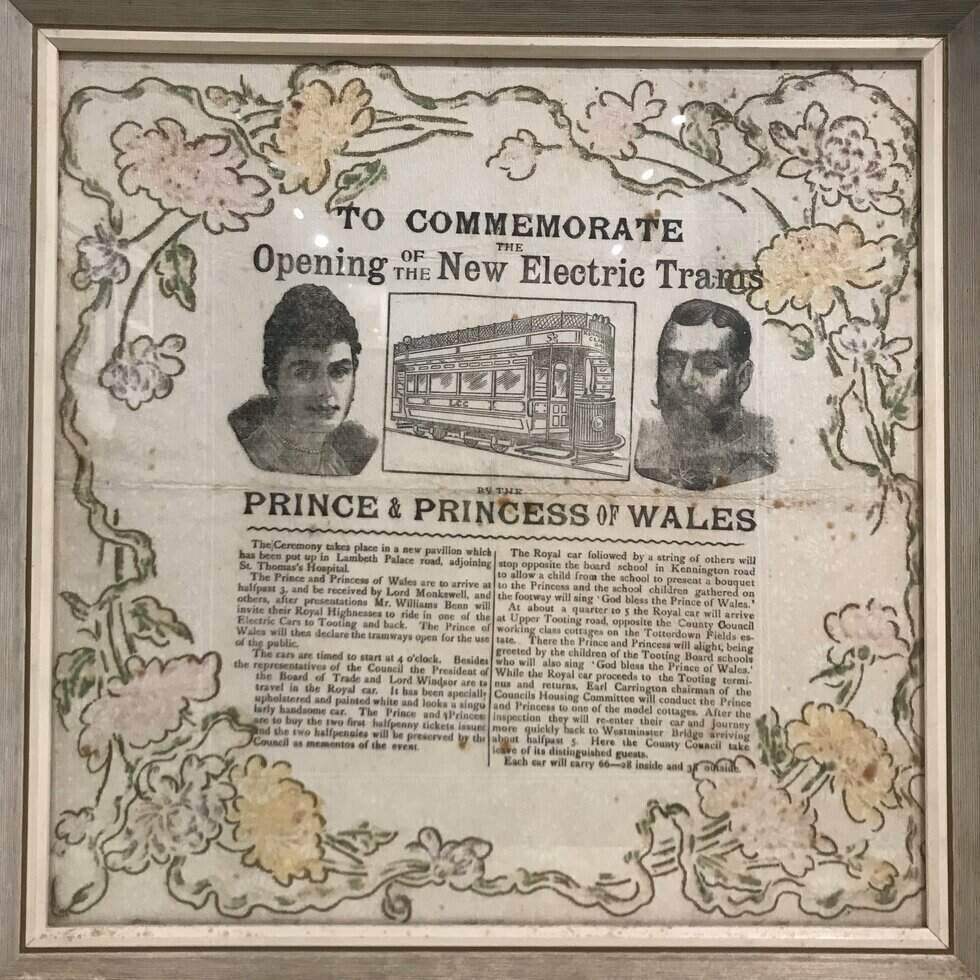
The napkin produced as a souvenir of the event for the use of those attending the celebratory banquet.
The Tramway Museum Society is planning to commemorate this important 120th anniversary by arranging a photographic opportunity at Crich Tramway Village on 15th May 2023. This is planned to feature London County Council tramcars numbers 106 and No. 1 together on static display. Between them, these two tramcars ‘book-end’ the beginning and end of electric tramway operations by the LCC – 106 was built in 1903 at the start of operations, whilst No. 1 appeared in 1932 and was the last new tramcar to enter service in London.
May 15th also marks another anniversary specifically related to LCC No. 1. On this date in 1938, a special tram tour involving LCC No. 1 was held for tram enthusiasts by the Light Railway Transport League. This organisation has a close involvement in the story of the Tramway Museum Society and later became the Light Rail Transit Association. The LRTL was founded in 1937 and from 1938 began publishing a journal – The Modern Tramway – as part of its mission to campaign for the retention and modernisation of tramways. On 15th May 1938, a special tour ran from Waltham Cross to Purley using London’s most modern tram, LCC No. 1. In addition to carrying LRTL members, other passengers included members of the press, who the LRTL hoped would promote positive press attention for their cause. It was successful in attracting publicity and new members for the LRTL.
So, May 15th has significance for two events relating to London’s tramways – the start of electric tramway operations in 1903, then 35 years later, a special tour arranged by the LRTL to attract support for their campaign to keep tramways.
More information on the 1938 tour can be found in Tramway Review No. 254, June 2018. The history of the LRTL, LRTA and Tramway Museum Society (and how they are connected) are on the following websites:
Thank you to TMS volunteer Jim Dignan for producing this blog.
